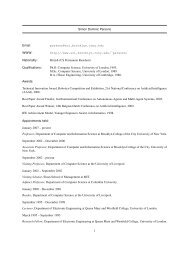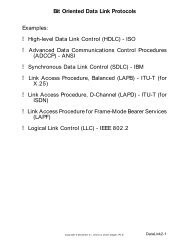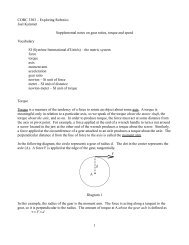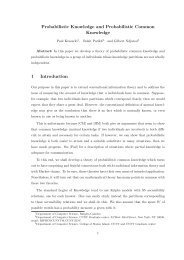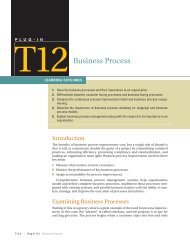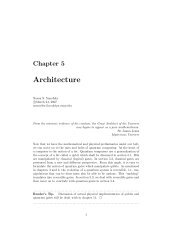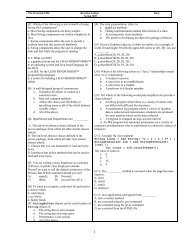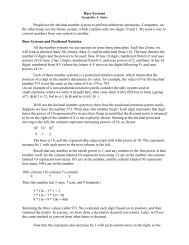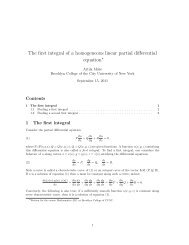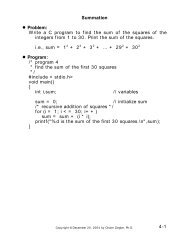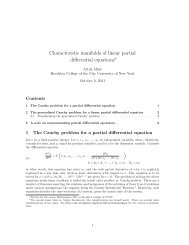*302 Greig and Others v Insole and Others 1977 G. No. 22461977 J ...
*302 Greig and Others v Insole and Others 1977 G. No. 22461977 J ...
*302 Greig and Others v Insole and Others 1977 G. No. 22461977 J ...
Create successful ePaper yourself
Turn your PDF publications into a flip-book with our unique Google optimized e-Paper software.
[1978] 1 W.L.R. 302 Page 53<br />
[1978] 1 W.L.R. 302 [1978] 3 All E.R. 449 (1978) 122 S.J. 162 [1978] 1 W.L.R. 302 [1978] 3 All E.R. 449 (1978)<br />
122 S.J. 162<br />
(Cite as: [1978] 1 W.L.R. 302)<br />
clearly means “the 17 first class county clubs,”<br />
since in this instance there is nothing in the wording<br />
of the subsequent rules to prevent such a construction.<br />
The 17 first class county clubs are<br />
“employers” within a definition contained in<br />
section 30 (1) of the Act of 1974.<br />
Accordingly the TCCB has in my judgment shown<br />
that it is an “organisation … which … consists<br />
wholly or mainly of employers … of one or more<br />
descriptions.” It thus surmounts the first hurdle<br />
which it must surmount if it is to show that it is an<br />
“employers' association,” within the statutory definition.<br />
Turning to the second hurdle, however, it<br />
is faced with far greater difficulties. Rule 2<br />
of its rules which sets out its functions<br />
provides as follows: “2.<br />
Functions<br />
“The board shall be responsible to the Cricket<br />
Council for:(a)The organisation <strong>and</strong> administration<br />
of all Test <strong>and</strong> trial matches in the United Kingdom.(b)The<br />
organisation <strong>and</strong> administration of<br />
M.C.C. overseas tours.(c)The negotiation of financial<br />
<strong>and</strong> playing conditions with the overseas governing<br />
body concerned for tours to <strong>and</strong> from the<br />
United Kingdom.(d)The receipt, as agent for the<br />
various bodies detailed in Appendix ‘A,’ of moneys<br />
derived directly or indirectly from Test Matches at<br />
home, from overseas tours <strong>and</strong> from any other<br />
matches or competitions organised by the board <strong>and</strong><br />
for the payment of the relevant expenses <strong>and</strong> for the<br />
distribution of the net receipts, in accordance with<br />
Appendix ‘A.’(e)<br />
The administration<br />
*361 <strong>and</strong> promotion<br />
of the first class county championship <strong>and</strong><br />
any other competition concerning the first class<br />
counties.<br />
(f)The rules governing the<br />
registration <strong>and</strong> qualification of cricketers in county<br />
cricket (Appendix ‘B’).”<br />
Mr. Kempster, by a careful analysis of the subsequent<br />
rules of the TCCB <strong>and</strong> the appendices to<br />
those rules, <strong>and</strong> of the evidence relating to what it<br />
actually does in practice, has sought to show that its<br />
“principal purposes include the regulation of relations<br />
between employers … <strong>and</strong> workers.” I think,<br />
however, that there is at least one fatal flaw in this<br />
proposition.<br />
In my judgment, the wording of the statutory<br />
definition of an “employers' association” contained<br />
in section 28 (2) (a) of the<br />
Act of 1974 in its context clearly shows that, if an<br />
organisation is to fall within this definition, it must<br />
comprise a number of employers, who by virtue of<br />
their common characteristic as employers of a certain<br />
description or descriptions, have associated<br />
themselves for purposes among the most important<br />
of which is included the regulation of relations<br />
between employers of such description or descriptions<br />
<strong>and</strong> workers. In my judgment it follows from<br />
this that the very wording of the definition contemplates<br />
that, if an organisation is to fall within the<br />
statutory definition, it must be responsible<br />
to the members who have associated themselves for<br />
such purposes . If, under the terms of its<br />
constitution, it were made responsible for the exercise<br />
of its functions not to its members but to other<br />
persons, this would in my judgment be quite inconsistent<br />
with its being an “employers' association.”<br />
For on this footing its members would not have the<br />
full right collectively to supervise <strong>and</strong> control the<br />
activities of the association, which they could have<br />
been expected to dem<strong>and</strong> if they had joined together<br />
in the association for a principal purpose, albeit<br />
among other principal purposes, of regulating their<br />
relations as employers with their workers.<br />
Under the express terms of rule 2<br />
of the Rules of the TCCB , it is made responsible<br />
in the exercise of its functions not to its<br />
members but to the Cricket Council. Furthermore<br />
that this is no accident of drafting <strong>and</strong> that the<br />
Cricket Council indeed has the ultimate control<br />
over the activities of the TCCB is illustrated by two<br />
further provisions of the TCCB rules. Under<br />
rule 3 (d) , which relates to meetings<br />
of the TCCB, a straight majority is expressed<br />
© 2011 Thomson Reuters.



